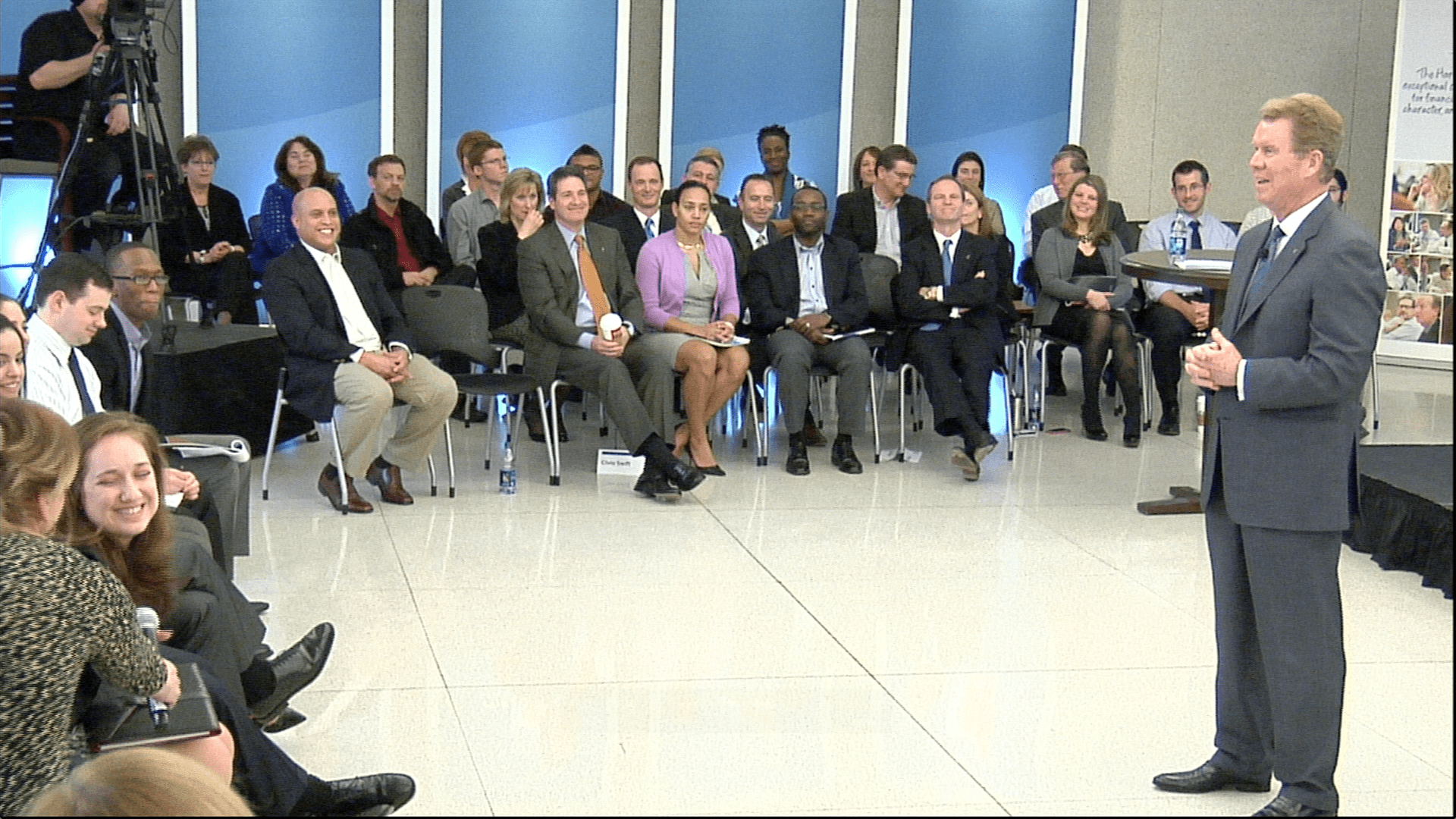
 The backstory
The backstory
In November 2011, two years into my work as CEO of The Hartford, we got a letter from Paulson & Company, the hedge fund run by John Paulson. With 9% of our shares, he had recently become our largest shareholder. At the time, The Hartford combined its traditional focus on property & casualty insurance with a large operation in variable annuities and other life insurance products. In the run-up to the 2008 financial crisis, the company had aggressively expanded into those annuities. While some other insurance companies’ stock had recovered much of their value, The Hartford’s stock was still trading at less than half of book.
Paulson advised us to spin off the life insurance side as a stand-alone company and focus on P&C. Given the challenges The Hartford continued to face, he must have had a pretty powerful argument for outsiders.
We thanked him, but said we were already working on a different plan to fix the business. Unimpressed, he joined the next quarterly earnings call, in February 2012, and excoriated us to do something drastic and soon.
Still, we stuck to our guns and continued with our work. Soon we announced a somewhat different strategy, to sell our individual life insurance and retirement businesses piecemeal and put the annuities into runoff. Paulson said that wasn’t good enough, that his plan was still better. But as we sold off the businesses to strategic buyers at a good price, bringing in substantial free capital, he came around. When I retired in June 2014, he issued a statement praising me for leading a “generational transformation of The Hartford.”
We understood where Paulson was coming from
When a prominent investor like Paulson sends you a letter, it stirs you into action. We knew that we had to intensify our existing strategy work. But we didn’t circle the wagons as I’ve seen a lot of companies do. We didn’t treat the attack as a battle where there was going to be a winner and a loser, even after that harsh earnings call. The Wall Street Journal ran a front-page article with scowling mug shots of Paulson and me facing off, but I didn’t take the bait. It helped that I got started in financial services working with the apparel industry, so I was used to being screamed at. I had already been called every name in the book.
I realized early enough that it wasn’t personal—these business standoffs rarely are. It wasn’t even about The Hartford. Hedge funds are pretty blunt instruments. They see arbitrage opportunities and make big bets, and often don’t fully understand the complexities of your company. Paulson had a macro bet in early 2010 that the economy would recover, and The Hartford was a big way to leverage that bet—we had so far to go up. But his macro bet wasn’t paying off by late 2011, so he was doing what he could to recover. He just wanted to get a return on his investment.
Some companies engage the media to defend their position, but we chose not to. We just worked behind the scenes with Paulson and others, especially the sell-side analysts. Most of them agreed that something had to happen at The Hartford, but didn’t think Paulson’s idea would work.
Fortunately the institutional investors didn’t rally to Paulson either. Partly that was because, in 2012, most were still hesitant to align with an activist. Big investors are now much more willing to join an attack, so staying professional in these situations is all the more important. We also kept abreast of things: if Paulson’s team was calling a major investor of ours, we knew about it.
We made sure we did our homework
It helped a lot that we had already started working on the very problem that Paulson addressed. He was right about a lot of his analysis, especially the diagnosis. But we had already gone past that with our plan. So we weren’t stuck comparing his proposal to the status quo.



0

1:00 - 5:00 pm
Over 70% of Executives Surveyed Agree: Many Strategic Planning Efforts Lack Systematic Approach Tips for Enhancing Your Strategic Planning Process
Executives expressed frustration with their current strategic planning process. Issues include:
Steve Rutan and Denise Harrison have put together an afternoon workshop that will provide the tools you need to address these concerns. They have worked with hundreds of executives to develop a systematic approach that will enable your team to make better decisions during strategic planning. Steve and Denise will walk you through exercises for prioritizing your lists and steps that will reset and reinvigorate your process. This will be a hands-on workshop that will enable you to think about your business as you use the tools that are being presented. If you are ready for a Strategic Planning tune-up, select this workshop in your registration form. The additional fee of $695 will be added to your total.

2:00 - 5:00 pm
Female leaders face the same issues all leaders do, but they often face additional challenges too. In this peer session, we will facilitate a discussion of best practices and how to overcome common barriers to help women leaders be more effective within and outside their organizations.
Limited space available.

10:30 - 5:00 pm
General’s Retreat at Hermitage Golf Course
Sponsored by UBS
General’s Retreat, built in 1986 with architect Gary Roger Baird, has been voted the “Best Golf Course in Nashville” and is a “must play” when visiting the Nashville, Tennessee area. With the beautiful setting along the Cumberland River, golfers of all capabilities will thoroughly enjoy the golf, scenery and hospitality.
The golf outing fee includes transportation to and from the hotel, greens/cart fees, use of practice facilities, and boxed lunch. The bus will leave the hotel at 10:30 am for a noon shotgun start and return to the hotel after the cocktail reception following the completion of the round.